Unit 2: Freedom, Enslavement, and Resistance
Topic 2.1: African Explorers in the Americas
Early 16th century
free and enslaved Africans familiar with Iberian culture journeyed with Europeans in their earliest explorations of the Americas
the first Africans in the territory that came into the USA were known as Ladinos
Ladinos
part of a generation known as “Atlantic Creoles.”
worked as intermediaries before the predominance of chattel slavery.
familiar with multiple languages, cultural norms, and commercial practices as a measure of social mobility
essential to the efforts of European powers
Black participation in America’s colonization resulted from Spain’s early role in the slave trade and the presence of enslaved and free Africans
ex: Florida, South Carolina, Georgia
Roles of Africans during Colonization
conquistadors- in hopes of gaining their freedom, participated in conquest
enslaved laborers- mining and agricultural
free skilled workers/artisans
Juan Garrido
conquistador born in the Kingdom of Kongo
became the first known African who traveled to North America in 1513 as a free man
served in Spanish military forces to conquer indigenous populations
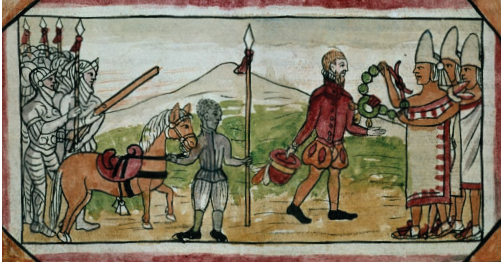
Estevanico (Esteban)
enslaved African healer from Morocco
forced to work in 1528 as an explorer and translator in Texas
eventually killed by Indigenous
groups resisting Spanish colonialism
Topic 2.2 Departure Zones in Africa and the Slave Trade to the United States
Scope of Transatlantic Slave Trade
people arrived in the Americas from Africa than from any other region in the world.
lasted over 350 years & more than 12.5 million enslaved Africans were forcibly transported to the Americas.
only about 5 percent of those who survived came directly from Africa to the US
Charleston, South Carolina, was the center of United States slave trading.
Portugal, Great Britain, France, Spain, and the Netherlands were the top nations involved
Slave-trading zones in Africa
nine contemporary African regions: Senegambia, Sierra Leone, Liberia, Côte d’Ivoire, Ghana, Benin, Nigeria, Angola, and Mozambique.
Over half of the captives brought to mainland North America were from Senegambia and Angola.
Distribution of African ethnic groups
cultural contributions varied based on place of origin
multiple combinations of African-based cultural practices, languages, and belief systems within African American communities were created
Nearly half of those who arrived in the United States came from societies in Muslim or Christian regions of Africa.
came from numerous West and Central African ethnic groups, such as the Wolof, Akan, Igbo, and Yoruba.
Topic 2.3 Capture and the Impact of the Slave Trade on West African Societies
Three-Part Journey
First part: Africans were captured and marched from interior states to the Atlantic coast
waited in crowded, unsanitary dungeons.
Second Part-middle passage: traveling across the Atlantic Ocean lasted 3 months. People were separated permanently from their communities.
humiliated, beaten, tortured, and raped
widespread disease and malnourishment
15 percent of captive Africans perished
Final part:
quarantined, resold, and transported domestically to distant locations
Destabilization of West African societies
increased monetary incentives to use violence and enslave communities
wars between kingdoms were exacerbated by firearm trade with Europeans
coastal states became wealthy from trade and inferior states were unstable
African leaders sold soldiers and war captives from opposing ethnic groups
instability and loss of kin
traditions, communities, and families were lost
Key Features of Narratives
detailed their experiences in poetry and a genre known as slave narratives.
slave narratives- foundational to early American writing.
serve as historical accounts, literary works, and political texts
designed to end slavery and the slave trade
black humanity and inclusion of African people in American Society
Topic 2.4 African Resistance on Slave Ships and the Antislavery Movement
Methods Africans Used to Resist Enslavement
staging hunger strikes, attempting to jump overboard to resist slavery, overcoming linguistic differences
the slave trade became expensive and dangerous
led to changes in the design of slave ships
barricades, nets, guns
Sengbe Pieh- a captive from Sierra Leone led a revolt on a slave ship in 1839. Mende captives were later granted freedom by the Supreme Court. led to public sympathy
Features of Slave Ship Diagrams
diagrams only show half the number of slaves that people used to maximize profit
unsanitary and cramped conditions led to death and disease
guns, nets, and force-feeding prevented resistance
Slave ships effect on Abolitionists and Black Artists
antislavery activism became prominent.
people circulated diagrams to raise awareness of the
visual and performance
conditions slaves had to go through
Black visual and performance artists showed the slave ships to honor the memory of the people who died
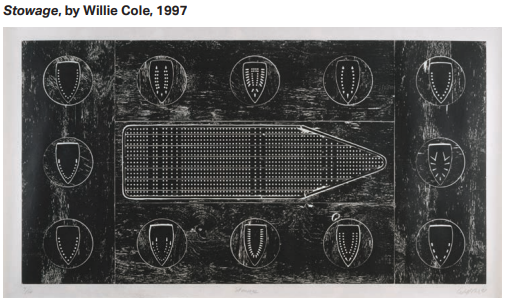
TOPIC 2.5 Slave Auctions and the Domestic Slave Trade
Nature of Slave Auctions
power of law and white supremacy
led to assault on body, mind, spirit
punished by whipping in front of families
African American Authors
wrote literature genres like narratives and poetry
emphasized physical and emotional effects when being sold
claim that slavery was a benign institution to advance the cause of abolition.
Cotton industry
the enslaved population grew through childbirth to meet the demand
South Carolina, Georgia, Florida, Alabama, Mississippi, Louisiana, and Texas were the main regions
slaves became commodities
slaves were relocated to the upper South during the cotton boom
families were displaced during the Second Middle Passage forced migrations
TOPIC 2.6 Labor, Culture, and Economy
Roles of Slaves
agricultural, domestic, and skilled labor in urban areas
some were bound to people’s churches and factories
black-smithing, basketweaving, and the cultivation of rice and indigo.
many became painters, carpenters, tailors, musicians, and healers and developed a culture
Effect on Musical and Linguistic Practices
gang system
slaves worked under groups under an overseer to cultivate cotton, sugar, and tobacco. they created work songs to keep pace with the work
task system- rice and indigo
worked until they met a daily quota
maintained linguistic practices, such as the Gullah Creole language
Carolina Lowcountry
Methods Africans Used to Resist Enslavement
Economic effects
economic interdependence between the North and South and benefitted cities
were alienated from the wealth they produced
no wages to pass down and no rights to accumulate property
TOPIC 2.7 Slavery and American Law: Slave Codes and Landmark Cases
Effect of American Law
Article I and Article IV of the United States don’t refer to terms like slave and slavery
The 13th Amendment abolished slavery
slave codes defined slavery as life-long and inheritability
law prevented congregation, from possessing weapons and wearing fine fabrics, among other activities.
Code Noir and Código Negro
Slave codes and other laws- reserved opportunity and protection from white people
some states banned the entry of free Blacks
laws enacted restrictions such as vote and testifying
before 1879 only Wisconsin and Iowa gave Black the right to vote
Slave Codes
South Carolina’s 1740 slave code- updated in response to the Stono rebellion of 1740
defined slaves as nonsubjects
prohibited gathering, drumming, learning to read, rebelling, running away, or moving abroad, including to other colonial territories
some got condemned to death
Dred Scott’s freedom suit (1857)- African Americans are enslaved, free, and could never be citizens
TOPIC 2.8 The Social Construction of Race and the Reproduction of Status
Partus Sequitur Ventrem
In the 17th century, a law determined a child's legal status based on their mother's status, impacting enslaved African Americans greatly.
In the United States, hereditary racial slavery was established.
ensured that enslaved African American women's children would also be considered property.
led African Americans to lose their right to claim their children.
prohibit the mixed-race children of Black women from inheriting the free status
gave male enslavers the right to deny responsibility for the children
Racial Concepts and Classifications
considered socially constructed, not based on clear biological distinctions
genetic diversity exists everywhere
emerged in tandem with systems of enslavement and oppression.
Phenotype- perceptions of racial identity. some laws were defined regardless and tied to rights to perpetuate slavery
pre-civil war differed on the percentage of ancestry that defined a person as white or Black
one drop rule- classified a person with any degree of African descent as part of a singular, inferior status.
classification prohibited multiracial and multiethnic heritage embracement
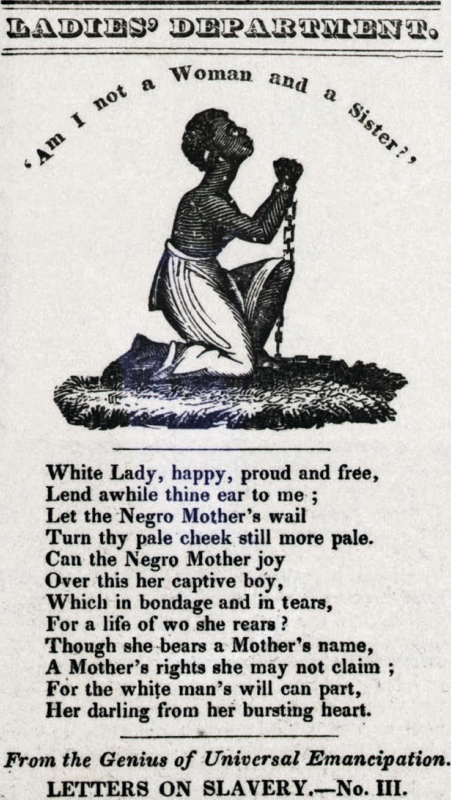
TOPIC 2.9 Creating African American Culture
Forms of Self-expression
drew upon blended influences from African ancestors, community members, and local European and Indigenous cultures.
aesthetic influences, pottery, and quilt-making for storytelling and memory
instruments such as rattles from gourds, the banjo, and drums similar to West Africa
lingua franca- a common language to communicate across languages with elements from West African and European languages to create a Creole language like Gullah
Musical Elements
Christian hymns combined with rhythmic and performative elements from Africa
clapping, improvisation, and syncopation
biblical themes
all created a distinct genre that later evolved into gospel and blues
came from Senegambians and West Central Africans in Louisiana
influenced American blues, which has the same Fodet musical system in Senegambia

Significance of spirituals
Music and Fait combined into spirituals- sorrow songs and jubilee songs
sang to articulate hardships and hopes
social spiritual and political
to resist dehumanizing conditions and injustice of enslavement
express their creativity, and communicate strategic information
warnings, plans to run away, and methods of escape.
lyrics had meanings of biblical themes but also to alert people to escape via the Underground Railroad.
reflected African American heritage and identity
preserve rhythms and performance, connecting culture from West Africa to American experiences
TOPIC 2.10 Black Pride, Identity, and the Question of Naming
Changing Demographics
ban of international slave trading in 1808
percentage of African-born people in the African American population declined
American Colonization Society
formed to exile the free Black population
Black people responded by rejecting the term African to emphasize Americanism
African Americans described themselves through multiple ethnonyms- ethnic groups and nationalities
Afro-American, African American, and Black.
TOPIC 2.11 The Stono Rebellion and Fort Mose
Key Effects of the Asylum offered by Spanish
St Agustine 17th century
enslaved refugees fled to seek asylum. freedom was granted to those who turned Catholic
1738 the governor of Spanish Florida
Fort Mose- fortified settlement and refuge. first free black town
Francisco Menéndez- enslaved Senegambian who fought against the English in the Yamasee War
offered emancipation to those fleeing British
inspired Stono rebellion- 100 slaves set fire to plantations and marched to Spanish Florida
South Carolina passed the slave code in 1740 in response
fort Mose was soon destroyed
TOPIC 2.12 Legacies of the Haitian Revolution
Global Impacts of the Haitian Revolution
resulted in a colonial, enslaving government to a Black republic without slavery
prompted Napoleon to sell Louisiana to the US, which led to more slavery
led to opportunities for sugar production
led to relocation to US cities but also anxiety about slave revolts- which led to the passage of Alien and Sedition acts
Haiti’s growth was hindered by reparations needed to be paid to France
Maroons
these were Black people who escaped slavery to establish free communities
disseminated information and organized attacks for the Haitian revolution
former soldiers in the Kingdom of Kongo civil wars
diasporic communities and Black political thought
highlighted the unfulfilled promises of the American Revolution
inspired Louisiana Slave Revolt (1811) and the Malê Uprising of Muslim slaves (1835) in Brazil
symbol of Black freedom and sovereignty.
TOPIC 2.13 Resistance and Revolts in the United States
Daily forms of resistance
slowing work, breaking tools, stealing food, attempting to run away
sustained abolition movement
religious services and churches functioned as sites for gathering, mourning, and organization for abolition
Revolts and Abolitionist Effort
former African soldiers aided the ability to revolt
Santo Domingo 1526
slaves in the Dominican Republic aided Spanish Exploration and led a slave revolt in US territory, thereafter escaping to indigenous communities
Charles Deslondes German Coast Uprising, or the Louisiana Revolt of 1811
led 500 slaves to the largest revolt in the US
brought support from local plantations and maroons to New Orleans
Madison Washington 1851
led a rebellion on the brig creole by seizing the ship to a region where slavery was ended in the Bahamas
Religion led to resistance through rebellion and activism
ex: Nat Turner, Denmark Vesey, Maria Stewart, Henry Highland Garnet
TOPIC 2.14 Black Organizing in the North: Freedom, Women’s Rights, and Education
Organization in Communities
1860- 12% of black people were free
thrived in urban cities and created mutual-aid societies
funded schools, businesses, and churches
Black women activists
used speeches and publications about antislavery
Maria W. Stewart- the first black woman to publish a political manifesto and give a public address in the 1830s. This led to the feminist movement
Significance of Black Women Activists
called to attention race and gender discrimination
fought for abolitionism and rights, which later contributed to suffrage
central to African American politics
TOPIC 2.15 Maroon Societies and Autonomous Black Communities
Maroon communities
emerged throughout the African diaspora in hidden environments
self-emancipated people were free in this community where African culture prevailed and people were protected
formed within indigenous communities and areas like Great Dismal Swamp
Maroon wars
Maroons staged wars against colonial governments, advocating freedom
some made treaties and in turn extinguished slave rebellions
Bayono- led the war against the Spanish in Panama
queen nanny- led wars in Jamaica against English
TOPIC 2.16 Diasporic Connections: Slavery and Freedom in Brazil
Brazilian enslavement
more embarked in Brazil than anywhere else. Many came from the Middle Passage and were forced to work in sugar plantations, gold mines, coffee plantations, cattle ranching, and the production of food and textiles for domestic consumption.
Lived in cultural communities
capoeira- martial art by slaves that combines music and singing
congada- a celebration of King of Kongo’s birth

Number in Brazil vs US
19th century- The enslaved population decreased due to release from slavery
result of Catholic and Iberian influence
became the last country in the Americas to abolish slavery
In the US, enslaved Africans increased throughout the 19th century because of children born in slavery (about 4 million)
TOPIC 2.17 African Americans in Indigenous Territory
Slavery’s affect on relations
Maroons found refuge with Seminoles in Florida. Fought together in resistance to Second Seminole War
Some Indigenous enslavers were removed from their lands by the government and took African Americans with them
Indigenous nations adopted slave codes, created slave patrols, and assisted in recapturing enslaved Black people
hardened racial lines
created conflict
redefined Black communities as outsiders
TOPIC 2.18 Debates About Emigration, Colonization, and Belonging in America
Freedom and Self-determination
Due to abolitionism, emigrationists built communities outside the US to avoid slavery and discrimination
Dred Scott Case- effect of this
locations in Latin America, the Caribbean, and West Africa
allowed for culture, Afro-descendants, and a favorable climate
Paul Cuffee and Martin R. Delany- abolitionists who supported emigration, and promoted unity, pride, and Black nationalism
Cuffee was the first to relocate from the US to Africa in 1815. Took Black people to Freetown in Sierra Leone
Effect of Transatlantic Abolitionism
led to belonging to American ideals through abolition, freedom, representation, and racial equality
believed in birthright citizenship
Frederick Douglass- famous abolitionist but not protected from recapture
some found refuge in other nations
anti-emigrationists- celebrated independence but believed in exploitation based on race
contradictory
TOPIC 2.19 Black Political Thought: Radical Resistance
Black Activist radical resistance strategies
embraced action through revolts, violence, and urgency
some opposed moral suasion- appealing to morality and ethics
leveraged publications that detailed the horror of slavery.
some were smuggled as a resistance tactic
TOPIC 2.20 Race to the Promised Land: Abolitionism and the Underground Railroad
Role of the Underground Railroad
network of black and white abolitionists
provided transportation, shelter, and resources to those fleeing the South to the North, Canada, and Mexico
around 30000 African Americans reached freedom
Fugitive Slave Acts of 1793 and 1850- slaves were encouraged to be kidnaped and whoever escaped had to be returned
Significance of Harriet Tubman
returned to the South 19 times and led 80 to Freedom
sang spirituals to alert slaves about plans to leave
used geographic knowledge and social network
served as a spy and nurse for the Union Army during the Civil War
Combahee River Raid- Tubman became the first American woman to lead a military operation like this
TOPIC 2.21 Legacies of Resistance in African American Art and Photography
Significance of Visual Depictions
African Americans embraced photography to counter stereotypes
displaced as equal and worthy of dignity
Sojourner Truth- sold carte-de-visites to raise money, participated in tours, and recruited for the Union Army
photos showcased leadership and freedom
Frederick Douglass- extremely photographed, represented black achievement through freedom
used black aesthetic traditions for religious and cultural perspectives.
preserves the legacy of leaders
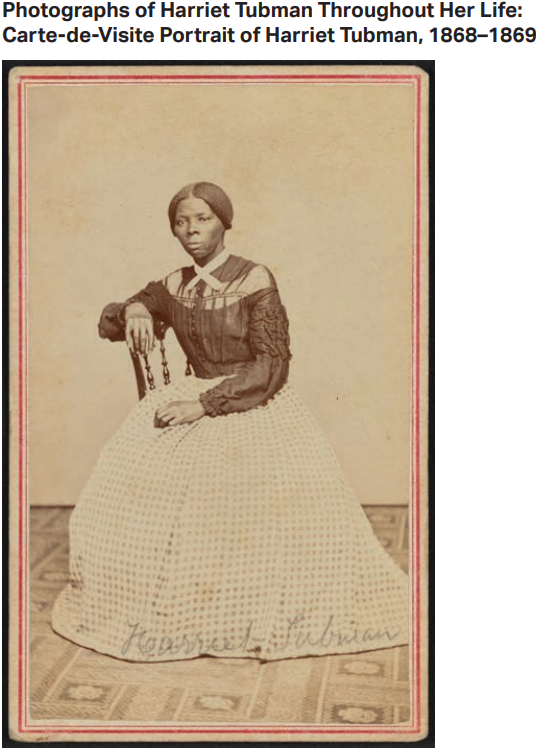
TOPIC 2.22 Gender and Resistance in Slave Narratives
Methods of resistance against sexual violence
rape laws did not apply to Black women.
resisted through fighting attackers, abortion drugs, infanticide, and running away with children
Gender Effect
narratives described suffering, escape, and how some acquired literacy
focused on humanity and advancing abolition
black women reflected on gender norms
modesty, vulnerability to violence, domestic violence
men- focused on Mahood and autonomy
TOPIC 2.23 The Civil War and Black Communities
Contributions during the Civil War
free and enslaved black communities join the Union side to advance abolition and citizenship
men worked as soldiers while women worked as cooks, nurses, and spies
some fled the South and supported the North.
free Black people raised money for refugees, established schools, and offered medical care
most of the people who fought were formerly enslaved
Motivations and Inequities
wanted to view themselves as citizens
permitted to join due to labor shortage, despite unequal conditions with slavery and the risk of enslavement by Confederates
Effect on Black Communities
free Black communities suffered from violence by those who opposed activism and equality with Blacks
some white communities resented being drafted to fight against Black neighborhoods
soldiers took pride in their role in ending slavery- even if not celebrated
poetry and photographs serve as evidence and prove sacrifice
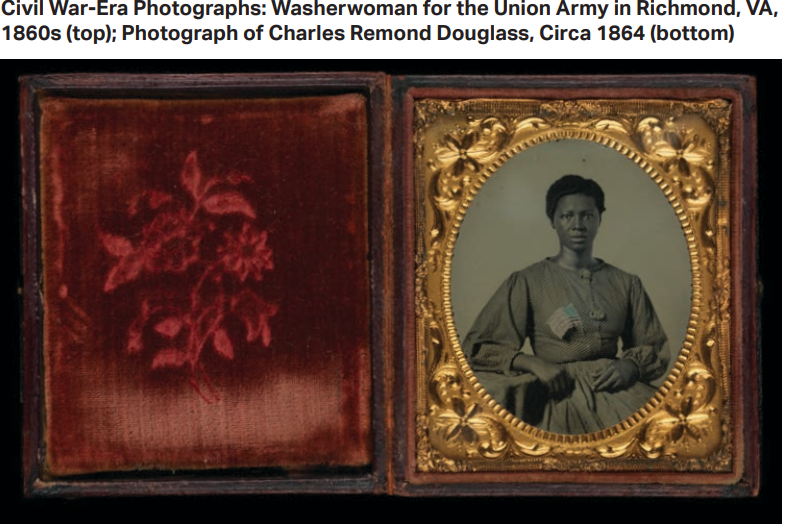
TOPIC 2.24 Freedom Days: Commemorating the Ongoing Struggle for Freedom
Ending enslavement
1863 Emancipation Proclamation- declared freedom for enslaved people in Confederate states as a wartime order
after the war, slavery continued in some areas until 13h Amendment
Thirteenth Amendment- secured permanent abolition of slavery except as a punishment
freed 4 million slaves and took steps towards freedom and justice
did not apply to slaves in Indigenous nations
The US had to negotiate treaties to end slavery here in 1866
but didn’t guarantee all rights
Ending enslavement
Juneteenth- end slavery in the last state (Texas) in 1865
slaves in Galveston Texas were free with the Union reading of General Order 3
this was the first document to mention racial equality
African Americans commemorated freedom days since abolition in NY (1827)
becomes a federal holiday in 2021
celebrations including singing spirituals and clothing that symbolizes freedom
This along with Emancipation Day and other freedom days celebrate:
struggles to end enslavement
embracing freedom even with ongoing struggles
commitment to joy and validation among themselves